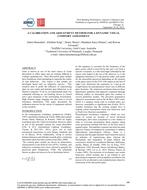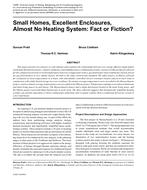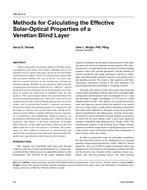Uses a finite difference model to analyses the steady-state and dynamic thermal performance of five thermal bridges in a commercial office building. States the steady-state thermal analysis revealed that the thermal bridges increased the overall envelope heat transfer coefficient for the office building by 33%. A thermal bridge was found to have a large effect when it has a large cross-sectional area that short-circuits the thermal insulation of the building envelope. In the dynamic analysis, the finite-difference model was used to numerically determine the conduction transfer function (CTF) coefficients for five thermal bridges. The CTF coefficients were shown to account correctly for both the steady-state and dynamic heat transfer performance of these thermal bridges.
KEYWORDS: Thermal bridges, offices, heat flow, performance, calculating, models
Citation: ASHRAE Trans. 1992, vol.98, part 1, paper number 3573, 291-304, 14 figs tabs, refs.
Product Details
- Published:
- 1992
- File Size:
- 1 file , 1.1 MB
- Product Code(s):
- D-17782


